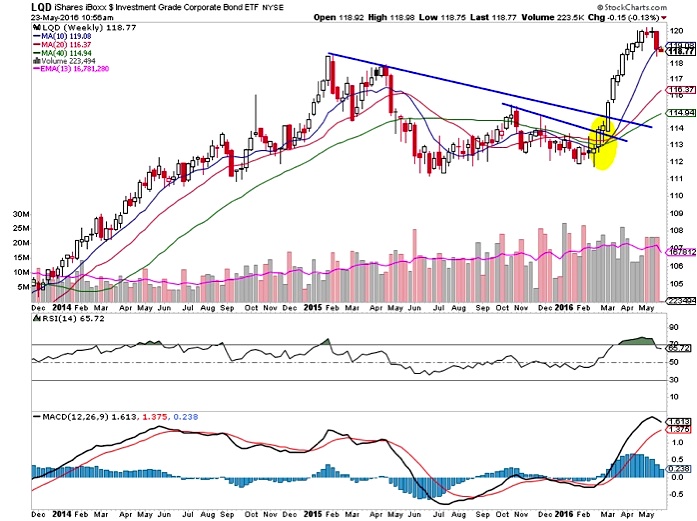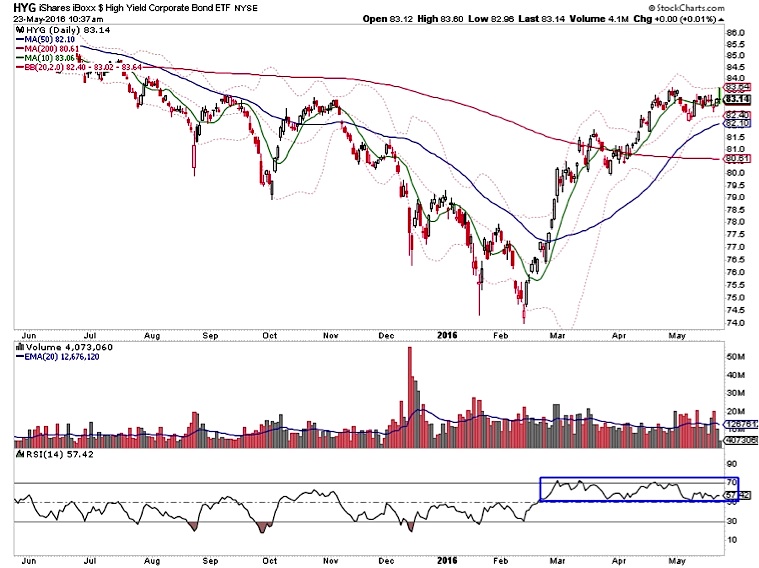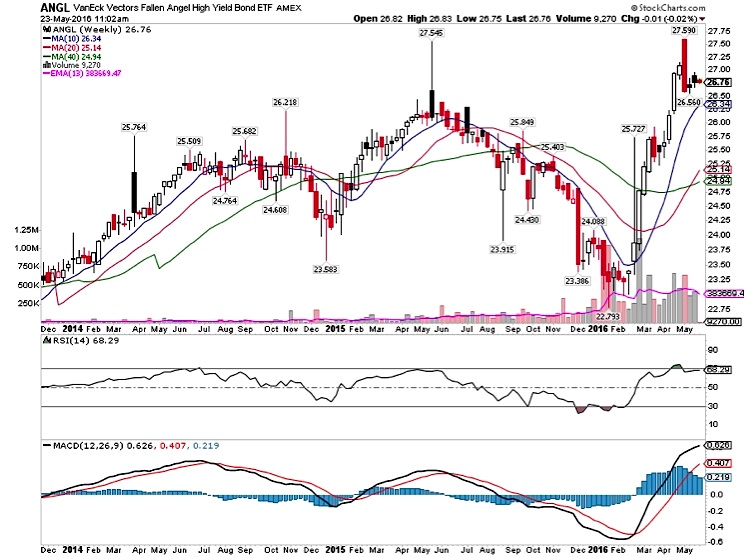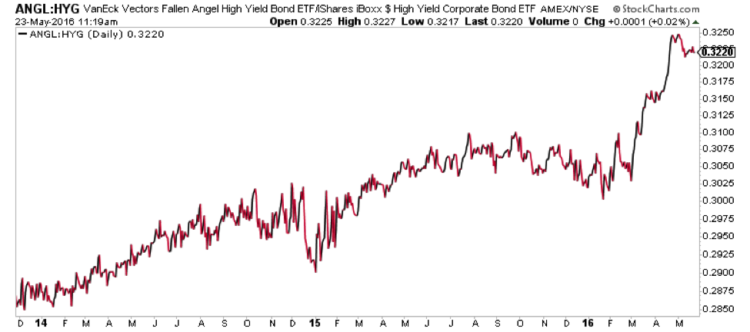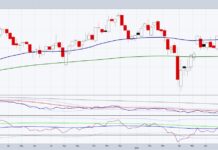Corporate bond ETFs were one of the biggest disappointments of the fixed-income landscape in 2015. Their lackluster returns and weakening fundamentals suggested an undercurrent of fear in the credit markets despite the ongoing trend of stable interest rates.
Fortunately, many of these corporate bond ETFs have turned a corner in 2016 and have surprised to the upside as a group. The following funds are some of the largest entrants in this field and offer ETF investors varying flavors of yield and risk.
KNOW WHAT YOU OWN: Corporate Bond ETFs
Reviewing The Playing Field – David Fabian
The iShares iBoxx $ Investment Grade Corporate Bond ETF (LQD) is the third largest fixed-income ETF by assets with over $28.8 billion under management. This fund invests in a diversified basket of 1,580 fixed-rate bonds of companies with high quality credit characteristics. This includes top names such as JP Morgan Chase (JPM), Verizon Communications (VZ), and Apple Inc (AAPL).
LQD has an effective duration of 8.34 years alongside a 30-day SEC yield of 3.18%. This may seem like a relatively modest income stream, but when compared against the 1.59% yield of the iShares 7-10 Year Treasury ETF (IEF), it actually stands out quite noticeably.
When examining the underlying drivers of risk and return in LQD, this ETF is certainly going to be influenced more by interest rate sensitivity than credit factors. While the credit environment is always going to be a moderate risk, the higher credit ratings of the underlying issuers help mitigate those concerns versus a basket of high yield (or junk) bonds.
Moving down the credit spectrum, the iShares iBoxx $ High Yield Corporate Bond ETF (HYG) is another popular offering for those who are inclined to reach for yield. HYG has nearly $15 billion dedicated to a basket of 1,000 bonds with noticeably weaker credit qualities.
To compensate for that risk, investors are provided with a much higher income stream. HYG currently sports a 30-day SEC yield of 6.64%, which is roughly double that of LQD. HYG has an effective duration of 4.01 years and most of its bonds centered in the B and BB rating categories.
Another option to consider in the high yield category is the VanEck Vectors Fallen Angel High Yield Bond ETF (ANGL). This fund takes a slightly different tact than HYG by tracking a more concentrated mix of 250 bonds of below investment grade companies. The “fallen angel” moniker is pledged to these securities because, at their issuance, the credit characteristics of the underlying companies were considered investment grade.
ANGL has $158 million in total assets, a 30-day SEC yield of 6.46% and 36% of its portfolio in companies domiciled outside the United States. This more global exposure, combined with a variant basket of high yield bonds, may make for a potential tactical compliment to a more traditional index such as HYG.
Reviewing Technical Action – Aaron Jackson
LQD saw an amazing early spring run as the ECB announced a corporate bonds purchase program. The fund is now in a pullback phase that may take a few more weeks to play out within rising trends on all timeframes.
HYG has also seen an amazing run off the market lows in February. Momentum as shown via RSI has been incredibly strong for a whole quarter now. That doesn’t mean this is a good time to get long. Frankly, it means the move at least mostly has already happened. Also note the long-term trend is non-existent.
ANGL is sitting near all time highs. Many of this fund’s top holdings are in the commodity space. We can use it as a proxy for risk taking in the group. So far so good, but similar to HYG the rally is extended and we’re seeing signs of distribution.
Finally, let’s look at the relative performance of high yield corporate bond ETFs HYG and ANGL. Interestingly, ANGL has consistently outperformed HYG since inception. That’s what a superior composition method looks like.
Summary
- The corporate bondsmarket has seen a great spring rally, but the move have already been made
- Investors need to exercise patience and wait for better opportunities to arise
- HYG and ANGL are both high risk, but ANGL’s composition strategy may be superior as it has consistently outperformed HYG
- Corporate bond ETFs continue to catch bids as a result of central banks’ actions. Not particularly due to underlying value. Long term investors should beware of the dislocations
Thanks for reading!
This article is part of a series co-authored by David Fabian (fmdcapital.com) and Aaron Jackson (northstarta.com). Each week we will be unlocking the secrets to some of the most talked-about exchange-traded funds in the market. The goal is to better understand what you own or elevate new ideas to the forefront of your watch list.
Twitter: @fabiancapital @ATMCharts
The authors may hold a position in the mentioned securities at the time of publication. Any opinions expressed herein are solely those of the authors, and do not in any way represent the views or opinions of each other or any other person or entity.

